Cosmos of the Islamic Revolution
On July 27, the first official launch of the Simurg Iranian carrier rocket (the mythical creature, the king of birds, sometimes compared with the phoenix) was successfully completed. This also served as a pretext for the official opening of the Imam Khomeini Space Center. Simurg has become the most powerful launch vehicle of the Iranian Space Agency and will be able to put satellites weighing up to 250 kg into orbit at an altitude of 500 kilometers. This is many times more than the previously available payload capacity of Iranian missiles, which will make it possible to reach a new level of Iranian astronautics. And what is she like?

Source: Iranian Space Agency
The Iranian Space Agency was founded on February 1, 2004, it is organizationally subordinated to the Ministry of Communications and Information Technologies and according to the charter it deals with the peaceful application of space technologies. Over the past years, it has developed two launch vehicles, launched 5 satellites (4 of them independently), participated in a joint project with China and Thailand, and also successfully conducted a rather extensive program of suborbital animal launches.
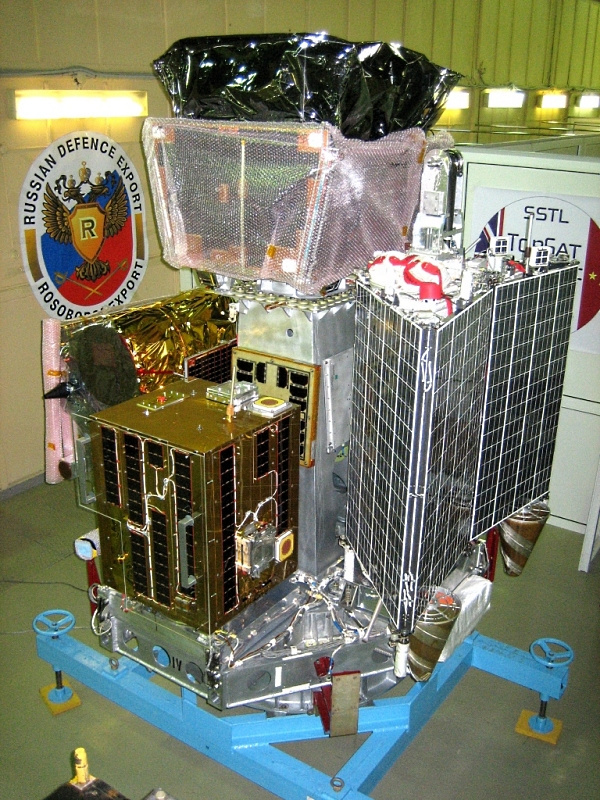
“Sina 1”, far right, source: Iran Times
The first Iranian satellite, Sina 1, was produced by Omsk Design Bureau Polet based on the Sterkh platform. On the same platform, several telecommunication satellites for Orbcomm and two Sterkh for Roscosmos were created. A satellite weighing 160 kg was launched in October 2005 on the Russian launch vehicle "Kosmos-3M" together with several other devices.
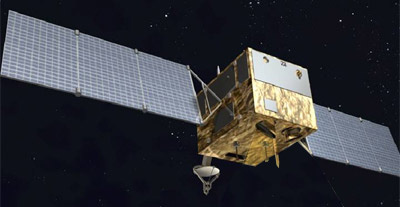
Huanjing in flight, source: Gunter's Space Page
In 2008, Iran took part in a joint Iranian-Chinese-Thai program, which launched two remote sensing satellites Huanjing (the “environment”). Iran contributed $ 6.5 million of 44 total costs. Curiously, the synthetic aperture radar for the satellite was manufactured in Russia at the NPO Mashinostroeniya.
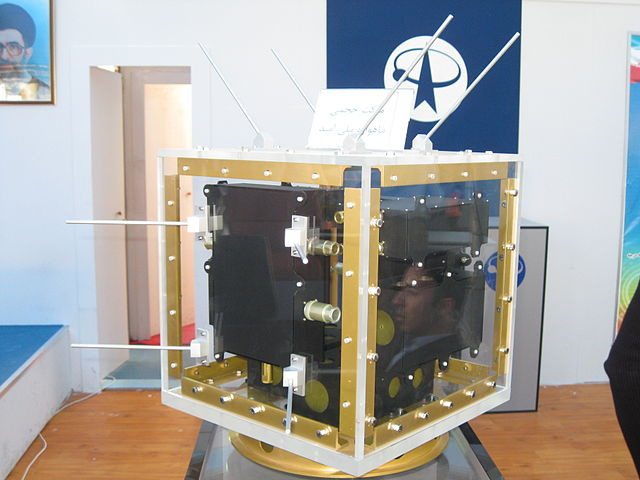
Omid Photo: Wikipedia
The first self-produced and launched for Iran was the satellite Omid ("Hope"). The twenty-seven-kilogram apparatus was launched in 2009 on a carrier rocket "Safir" ("Messenger"). A cube with a side of 40 cm and several antennas was used as a technical demonstrator, since it is claimed that it could only store and relay information. Iran became the ninth country that was able to launch a satellite on its own.
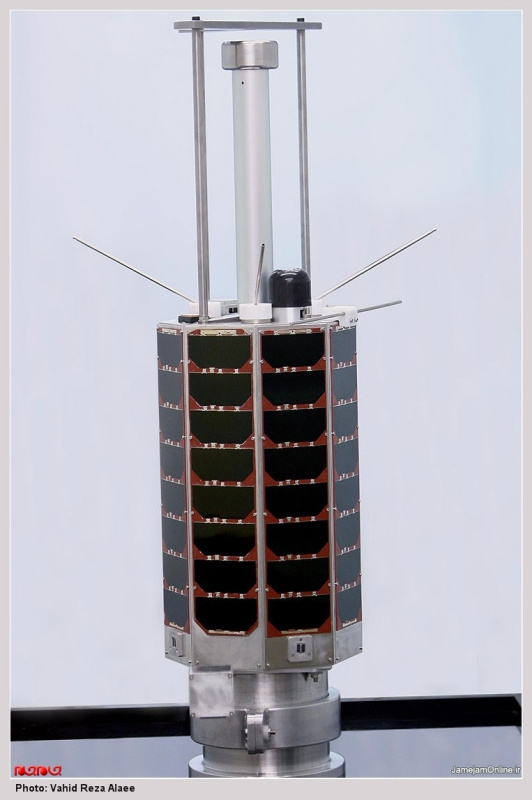
Rasad 1. Source
In 2011, the Rasad 1 satellite (“Observation”) was launched. The device weighing only 15 kilograms went off the orbit after three weeks, but could take photographs of the earth's surface with a resolution of 150 m per pixel.
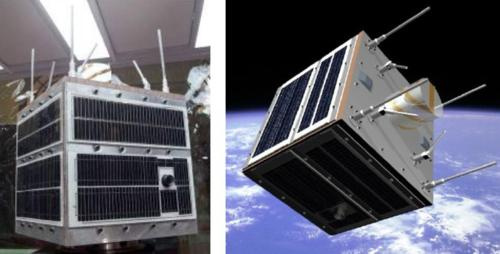
Navid. A source
In 2012, the experimental satellite remote sensing satellite Navid was launched with the marvelous full name Navid-e Elm-o San'at ("Preaching of Science and Technology"). It is alleged that it was made by students of the Iranian University of Science and Technology. A fifty-kilogram satellite could shoot panchromatic (black and white) images with a lower resolution of 400 meters per pixel, but it remained in orbit for two months.

Fajr. A source
And finally, Fajr (“Breaking Dawn”) became the latest in time (there was no satellite at the launch on July 27). The main function of the satellite was again the shooting of the earth's surface, but it was also reported that it carried an experimental navigation system and was the first Iranian satellite with orientation engines on compressed gas. It is also alleged that two satellites before him were lost in accidents. The device spent 23 days in orbit, and no maneuvers were noted in orbit (but it could well have successfully used these engines to turn around its axis).
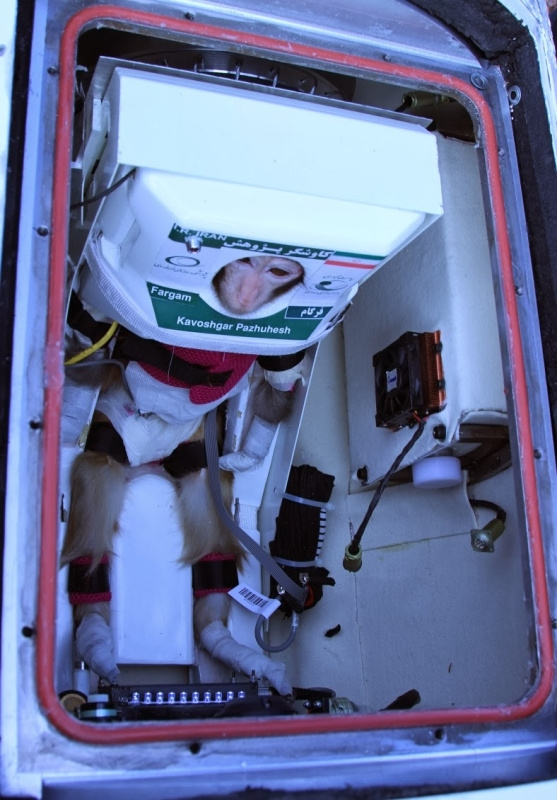
Fargam Monkey, itochnik
In parallel, there was a program of geophysical (suborbital) launches of vehicles with living beings. In 2010, Kavoshgar-3 (“The Researcher”) lifted a rodent, two turtles and several worms into space for a few minutes, making Iran the sixth state that launched animals into space. In 2011, we carried out unmanned tests of a capsule for a monkey and in the same year we failed to start with a monkey. Two years spent on refinement, and in 2013 two monkeys successfully flew.
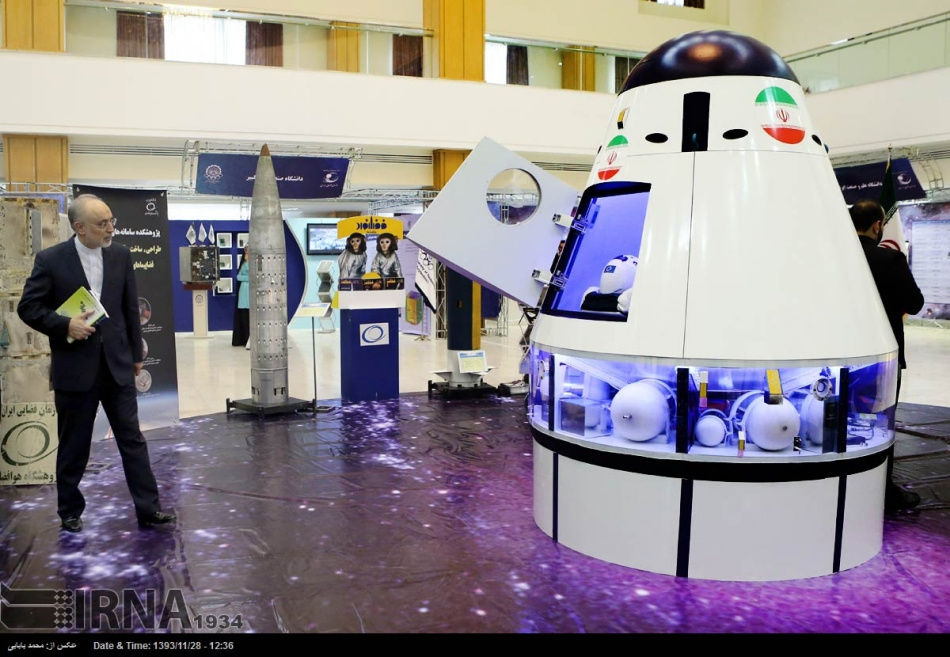
Layout manned ship. A source
Iran is working on manned space missions. In 2015, the layout of the manned spacecraft was shown. Existing Iranian launch vehicles cannot yet put it into orbit, but a suborbital flight is theoretically possible.
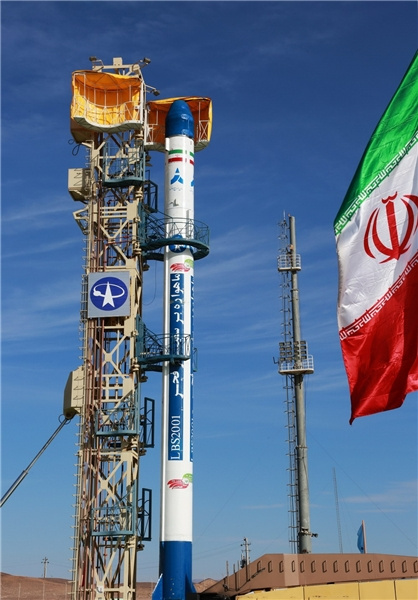
Safir rocket. A source
Until recently, Iran had only one carrier rocket, Safir (Messenger), made on the basis of the Shahab-3 ballistic missile (Meteor), which, in turn, is a relative of the North Korean Musudan, Saphir ”has two stages on the high-boiling components heptyl / amyl. The first test flight was carried out in 2008, since then the rocket was upgraded at least once - at the second stage, the thrust increased by 20% and the payload increased to 60 kg to a low orbit.
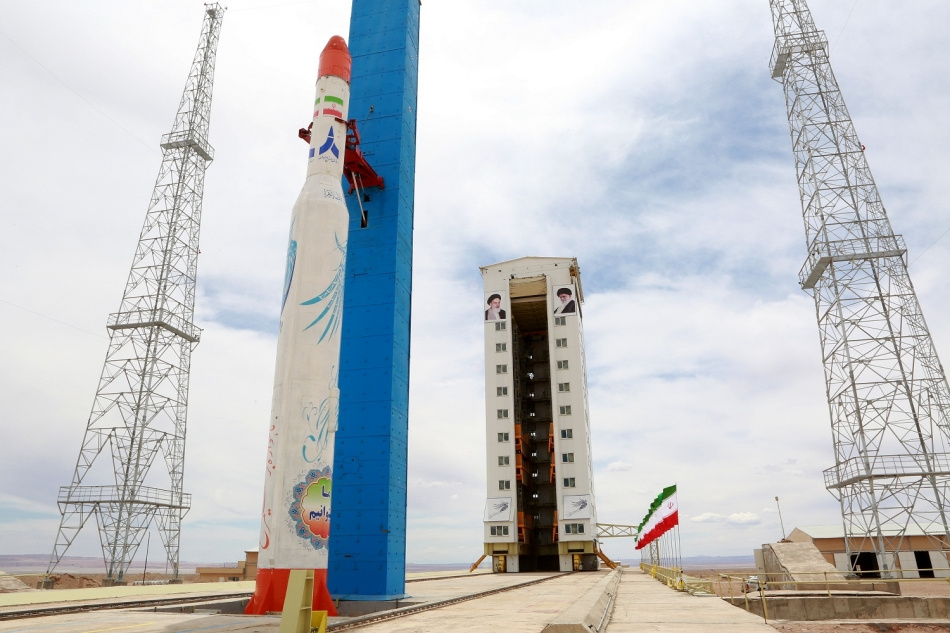
Simurg rocket, photo of Iranian Space Agency
Booster rocket "Simurg" developed since 2010. It is alleged that it started at least once, but for some reason the launch (or launches) was not officially announced. Due to lack of information, the two attributed start-ups could relate to other trials. Fortunately, now the Iranian Space Agency announced the launch in advance, so even in case of failure, we would know what is happening.
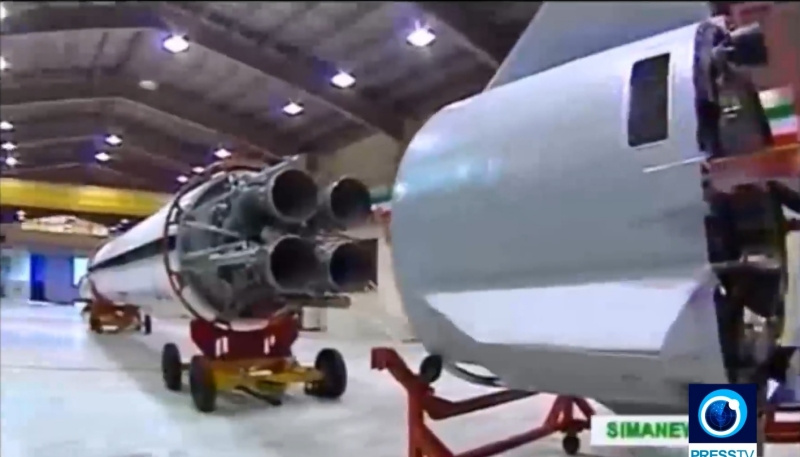
The first stage of the Simurg rocket, source
The rocket with a height of almost 26 meters has steps of different diameters - the first with a diameter of 2.4 meters, the second - 1.5. The initial mass of Simurg is estimated at 85 tons. Both steps use the high-boiling components heptyl / amyl. Based on the use of four combustion chambers, the Simurg is compared with the North Korean rocket carrier Ynkha, but so far there is little reliable information.
When it comes to space programs of states like Iran, the issue of the potential military danger of these missiles is constantly being raised. But the fact is that there are different requirements for space and military rockets. Military missiles must maintain high combat readiness and be secretive. A space rocket sacrifices these parameters for the sake of carrying capacity and can prepare for days to launch in the open area of a cosmodrome with a known location. Space launch vehicles in different countries grew out of the military, but their paths diverged very quickly. Iran has already reached the level where military and space rockets are developed and tested separately, so you should not be afraid of “Simurg” specifically. But to look at how another country develops space is interesting.

Source: Iranian Space Agency
The Iranian Space Agency was founded on February 1, 2004, it is organizationally subordinated to the Ministry of Communications and Information Technologies and according to the charter it deals with the peaceful application of space technologies. Over the past years, it has developed two launch vehicles, launched 5 satellites (4 of them independently), participated in a joint project with China and Thailand, and also successfully conducted a rather extensive program of suborbital animal launches.

“Sina 1”, far right, source: Iran Times
The first Iranian satellite, Sina 1, was produced by Omsk Design Bureau Polet based on the Sterkh platform. On the same platform, several telecommunication satellites for Orbcomm and two Sterkh for Roscosmos were created. A satellite weighing 160 kg was launched in October 2005 on the Russian launch vehicle "Kosmos-3M" together with several other devices.

Huanjing in flight, source: Gunter's Space Page
In 2008, Iran took part in a joint Iranian-Chinese-Thai program, which launched two remote sensing satellites Huanjing (the “environment”). Iran contributed $ 6.5 million of 44 total costs. Curiously, the synthetic aperture radar for the satellite was manufactured in Russia at the NPO Mashinostroeniya.

Omid Photo: Wikipedia
The first self-produced and launched for Iran was the satellite Omid ("Hope"). The twenty-seven-kilogram apparatus was launched in 2009 on a carrier rocket "Safir" ("Messenger"). A cube with a side of 40 cm and several antennas was used as a technical demonstrator, since it is claimed that it could only store and relay information. Iran became the ninth country that was able to launch a satellite on its own.

Rasad 1. Source
In 2011, the Rasad 1 satellite (“Observation”) was launched. The device weighing only 15 kilograms went off the orbit after three weeks, but could take photographs of the earth's surface with a resolution of 150 m per pixel.

Navid. A source
In 2012, the experimental satellite remote sensing satellite Navid was launched with the marvelous full name Navid-e Elm-o San'at ("Preaching of Science and Technology"). It is alleged that it was made by students of the Iranian University of Science and Technology. A fifty-kilogram satellite could shoot panchromatic (black and white) images with a lower resolution of 400 meters per pixel, but it remained in orbit for two months.

Fajr. A source
And finally, Fajr (“Breaking Dawn”) became the latest in time (there was no satellite at the launch on July 27). The main function of the satellite was again the shooting of the earth's surface, but it was also reported that it carried an experimental navigation system and was the first Iranian satellite with orientation engines on compressed gas. It is also alleged that two satellites before him were lost in accidents. The device spent 23 days in orbit, and no maneuvers were noted in orbit (but it could well have successfully used these engines to turn around its axis).

Fargam Monkey, itochnik
In parallel, there was a program of geophysical (suborbital) launches of vehicles with living beings. In 2010, Kavoshgar-3 (“The Researcher”) lifted a rodent, two turtles and several worms into space for a few minutes, making Iran the sixth state that launched animals into space. In 2011, we carried out unmanned tests of a capsule for a monkey and in the same year we failed to start with a monkey. Two years spent on refinement, and in 2013 two monkeys successfully flew.

Layout manned ship. A source
Iran is working on manned space missions. In 2015, the layout of the manned spacecraft was shown. Existing Iranian launch vehicles cannot yet put it into orbit, but a suborbital flight is theoretically possible.

Safir rocket. A source
Until recently, Iran had only one carrier rocket, Safir (Messenger), made on the basis of the Shahab-3 ballistic missile (Meteor), which, in turn, is a relative of the North Korean Musudan, Saphir ”has two stages on the high-boiling components heptyl / amyl. The first test flight was carried out in 2008, since then the rocket was upgraded at least once - at the second stage, the thrust increased by 20% and the payload increased to 60 kg to a low orbit.

Simurg rocket, photo of Iranian Space Agency
Booster rocket "Simurg" developed since 2010. It is alleged that it started at least once, but for some reason the launch (or launches) was not officially announced. Due to lack of information, the two attributed start-ups could relate to other trials. Fortunately, now the Iranian Space Agency announced the launch in advance, so even in case of failure, we would know what is happening.

The first stage of the Simurg rocket, source
The rocket with a height of almost 26 meters has steps of different diameters - the first with a diameter of 2.4 meters, the second - 1.5. The initial mass of Simurg is estimated at 85 tons. Both steps use the high-boiling components heptyl / amyl. Based on the use of four combustion chambers, the Simurg is compared with the North Korean rocket carrier Ynkha, but so far there is little reliable information.
When it comes to space programs of states like Iran, the issue of the potential military danger of these missiles is constantly being raised. But the fact is that there are different requirements for space and military rockets. Military missiles must maintain high combat readiness and be secretive. A space rocket sacrifices these parameters for the sake of carrying capacity and can prepare for days to launch in the open area of a cosmodrome with a known location. Space launch vehicles in different countries grew out of the military, but their paths diverged very quickly. Iran has already reached the level where military and space rockets are developed and tested separately, so you should not be afraid of “Simurg” specifically. But to look at how another country develops space is interesting.
All Articles